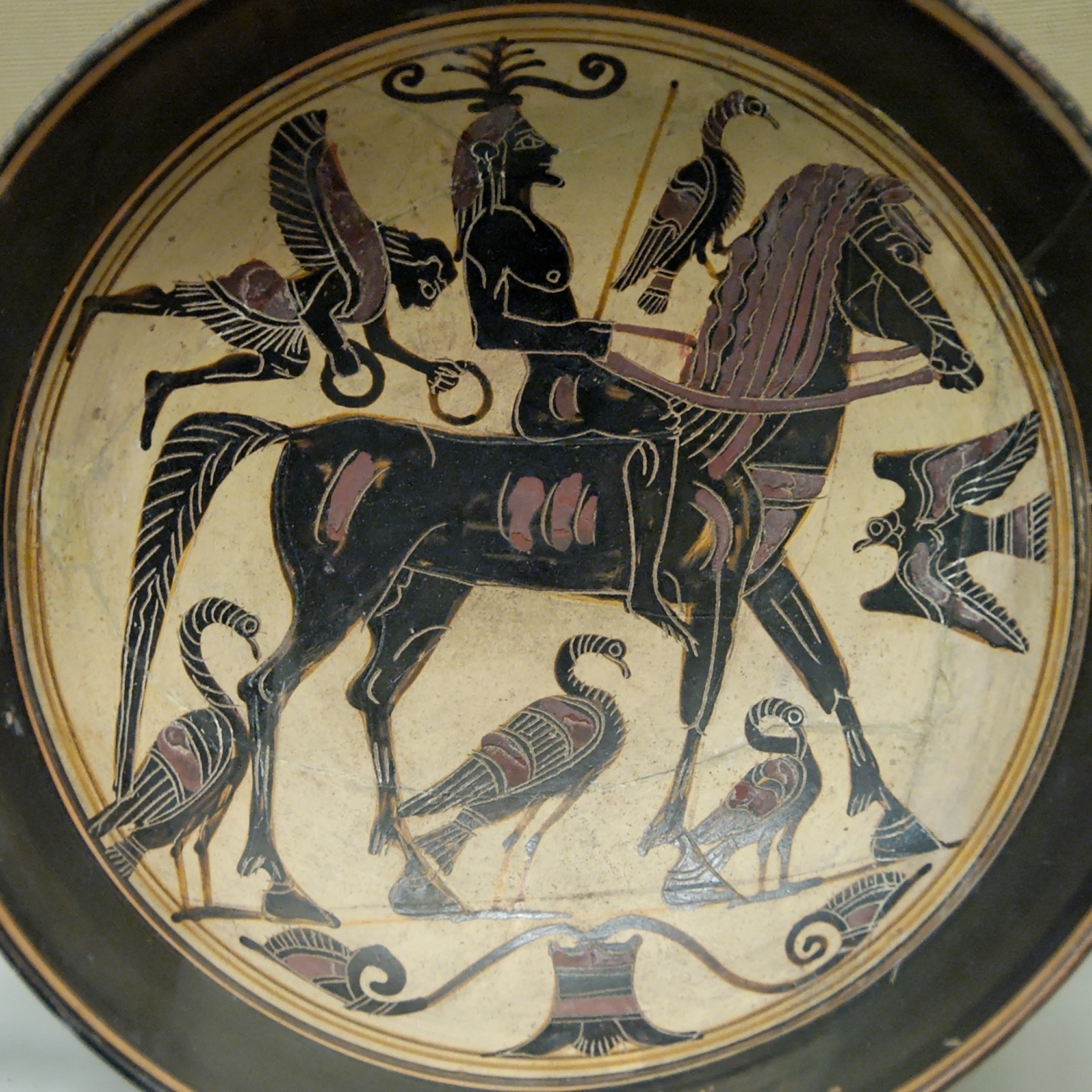Rider Painter on:
[Wikipedia]
[Google]
[Amazon]
 The Rider Painter was a Laconian vase painter active between 560 and 530 BC. He is considered one of the five great vase painters of
The Rider Painter was a Laconian vase painter active between 560 and 530 BC. He is considered one of the five great vase painters of
 The Rider Painter was a Laconian vase painter active between 560 and 530 BC. He is considered one of the five great vase painters of
The Rider Painter was a Laconian vase painter active between 560 and 530 BC. He is considered one of the five great vase painters of Sparta
Sparta ( Doric Greek: Σπάρτα, ''Spártā''; Attic Greek: Σπάρτη, ''Spártē'') was a prominent city-state in Laconia, in ancient Greece. In antiquity, the city-state was known as Lacedaemon (, ), while the name Sparta referre ...
.
His name is unknown, but he is called the Rider Painter after the horseman depicted on his name vase
In classical archaeology, a name vase is a specific "vase"In the study of ancient Greek pottery a "vase" is a general term covering all pottery shapes. whose painter's name is unknown but whose workshop style has been identified. The painter is co ...
at the British Museum
The British Museum is a public museum dedicated to human history, art and culture located in the Bloomsbury area of London. Its permanent collection of eight million works is among the largest and most comprehensive in existence. It docum ...
. He painted various shapes, including '' lebetes'', a rare shape in Sparta
Sparta ( Doric Greek: Σπάρτα, ''Spártā''; Attic Greek: Σπάρτη, ''Spártē'') was a prominent city-state in Laconia, in ancient Greece. In antiquity, the city-state was known as Lacedaemon (, ), while the name Sparta referre ...
, but predominantly '' kylikes''. He primarily produced for export, as indicated by the fact that one of his works has so far been discovered in Laconia. His workshop cannot be located, but was perhaps in a '' perioikic'' settlement. Since identifiable painting styles and peculiarities in vase shapes tend to be consistent, it is assumed that the Rider Painter, like other Laconian vase painters, was both potter and painter. He is considered somewhat inferior in talent to the other four great Laconian vase painters. He mainly depicted scenes from Greek mythology
A major branch of classical mythology, Greek mythology is the body of myths originally told by the ancient Greeks, and a genre of Ancient Greek folklore. These stories concern the origin and nature of the world, the lives and activities ...
, such as the blinding of Polyphemus
Polyphemus (; grc-gre, Πολύφημος, Polyphēmos, ; la, Polyphēmus ) is the one-eyed giant son of Poseidon and Thoosa in Greek mythology, one of the Cyclopes described in Homer's ''Odyssey''. His name means "abounding in songs and leg ...
, Kadmos or Herakles
Heracles ( ; grc-gre, Ἡρακλῆς, , glory/fame of Hera), born Alcaeus (, ''Alkaios'') or Alcides (, ''Alkeidēs''), was a divine hero in Greek mythology, the son of Zeus and Alcmene, and the foster son of Amphitryon.By his adoptive ...
. Other motifs include scenes from everyday life, such '' komasts'' or the eponymous rider.
Bibliography
* John Boardman: ''Early Greek Vase Painting. 11th to 6th Century BC. A Handbook'', Thames and Hudson, London 1998 (World of Art), 188 *Thomas Mannack
Thomas Mannack (born in 1958) is a German classical archaeologist.
Mannack obtained his Doctorate in 1992 with at the University of Kiel. The thema of his dissertation was ''Beazleys spätere und späteste Manieristen''. He is a specialist in ...
: ''Griechische Vasenmalerei. Eine Einführung''. Theiss, Stuttgart 2002, .
{{Authority control
Ancient Greek vase painters